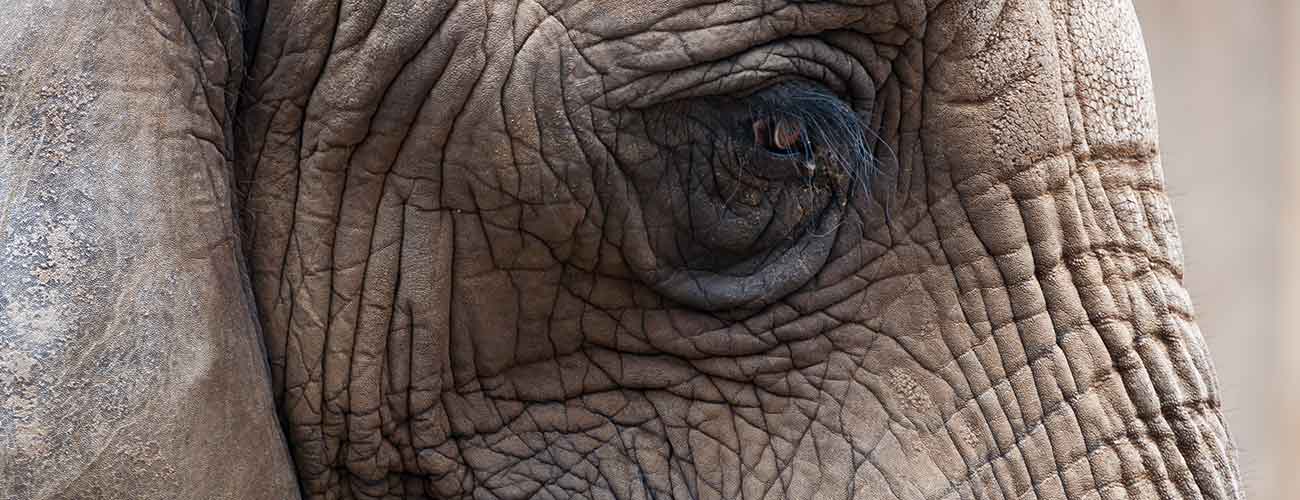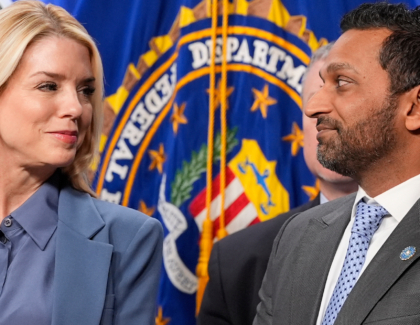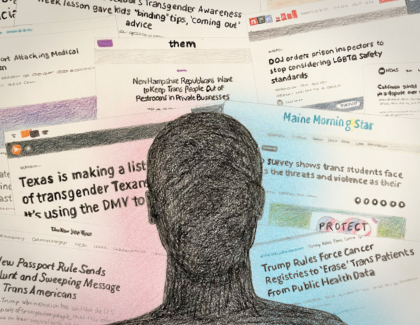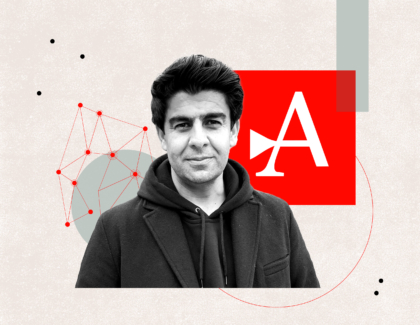Sign up for the daily CJR newsletter.
How does an unemployed thirty-something journalism school graduate with a background in Buddhist publishing take a flailing regional glossy about yoga and turn it into a multimedia “feel-good” content juggernaut that attracts millions of monthly readers?
He starts by changing the name. Waylon Lewis, an ambitious Boulder native with no experience running a publication, took over Yoga in the Rockies in 2003. His business partner and the publication’s founder, Boulder-based entrepreneur Travis Robinson, had jumped ship for more lucrative pastures, and Waylon was uninterested in a publication exclusively focused on yoga. He needed a name that fit his more global ambitions.
In Buddhism, elephants are sacred, a symbol of perseverance and exertion. The behemoths of the Sahara have long been threatened by ivory trading and habitat destruction, and while endangered, they’ve endured. Elephants are the largest animal with a plant-based diet, have no natural predators, and organize in matriarch-led, adaptable societies.
To Lewis, the elephant was a perfect symbol for his readers: earth-friendly, collaborative, vegetarian, and predominantly female. They are also a fitting symbol for his quest to build a new-media success story on positive and uplifting stories eagerly embraced by a community of supporters who also are often contributors. Relying on this community for both content and financial survival is unusual–and so far, it works.
Nine million people read Elephant Journal in July, he says, though readership and page views have declined over the last six months, which he attributes to changes in Facebook’s news feed algorithm. Facebook today generates nearly one-third of the site’s traffic. The site has grown from five paid staffers to 23, including editors, salespeople, and digital producers. Half of the site’s revenues comes from subscriptions–Lewis says “tens of thousands” of people pay about $1.20 per month for unlimited access to the site’s content.
Reading Elephant Journal can feel a bit like reading a sketch list for a season of “Portlandia.” Headlines include: On Being a Spiritual Warrior: Ten Truths; Letting Go In Relationships: A Buddhist’s View of Attachment; Tummy Talks: How to Rectify Digestive Imbalances with Ayurveda; Drawing Down the Moon: a Magical Ritual; and I Drank Warm Honey Lemon Water for a Year (Here’s What Happened). There’s multimedia, too: The latest Anais Nin recording, Waylon Lewis’s own YouTube series of interviews with “inspiring figures,” and new yoga routines.
Elephant Journal can be heartbreakingly earnest, shallow, and sometimes overwrought. But it’s the kind of “feel good” content that attracts eyeballs and advertisers to its very specific audience: 70 percent of Elephant Journal’s readers are “affluent, active, and choosy” women between the ages of 22 and 45, according to its media kit. But can it keep it up as it navigates a unique business model in a media habitat where every player faces an uphill climb?
An Elephant’s birth
Waylon Lewis is optimistic but unsure of the specifics–which is also a pretty accurate description of how the Boulder native, now 42, approaches most of life. His own quixotic origin story is just as much a tale of improbable hippie idealism realized; when he tells it, it’s difficult to separate his personal narrative from the creation of the publication.
He grew up attending months-long meditation retreats and Buddhist summer camps. “You can’t really get an American kid to be Buddhist, it just doesn’t work,” he admits. But Buddhist culture stuck with him enough that he embraced it apart from his parents when entering the secular Boston University journalism school. To his mind, journalism was a natural fit with Buddha’s teachings: “Our mission, whether you are a Buddhist or a Christian or Muslim, it should be to help in some way to create an enlightened society. I decided that journalism and media would be the easiest way to influence society.”
For a while, Lewis was able to combine his two selves with a fresh-out-of-college gig at Shambhala Publications, which publishes the pop-Buddhist bestseller Pema Chodron. But like many a new media mogul, he admits he was “horrible at working for other people.” He quit and moved to Boulder’s Chautauqua neighborhood. That’s where he met Robinson, who says his first meetings with Lewis at a downtown Boulder coffee shop were challenging. Lewis wasn’t interested in a yoga publication or working for $30,000 a year. Lewis was only in if he could be an equal partner of a publication that focused on all aspects of eco-friendly living. Robinson agreed to give Lewis a 50-50 stake in Yoga in the Rockies. He would act as its publisher, its editor in chief, and all-around editorial hustler. Robinson left the publication in 2003, just a year after launch. Lewis, on the other hand, invested his life savings into the project.
He rebuilt Yoga in the Rockies as Elephant Journal from his laptop, soliciting bylines and ad sales from everyone he met in Boulder. He camped outside and slept in yoga studios that carried the publication. “My entire life until now, I’ve not been sure if my debit card is going to bounce when I give it to someone.”
He went broke trying to make the now quarterly, print, regionally focused ‘zine work. Elephant Journal Quarterly was distributed for free in yoga studies throughout Utah, Colorado, and New Mexico, and available for purchase in some select organic book stores.
Then, after four years, Elephant’s distributors agreed to sell the publication in Whole Foods and sell ads to Patagonia: “Suddenly, we’re all over the country, and I’m walking around Boulder and everyone thinks I’m this young successful business guy. I started paying myself like, $45,000 or $50,000. It was really exciting.”
But as with any creative upstart, emerging success comes with compromises. Elephant Journal had always been printed on “eco-friendly” paper, and once Lewis began seeking out big distributors who serviced retailers like Borders and Barnes & Noble, the calculus of the magazine distribution business made that untenable. Big chains wanted 300,000 or more copies for the stores, about 40 per store. Lewis was told that 70 percent of the magazines printed would get tossed and recycled–an energy-intensive process that involves pulling ink from glossy paper. “I thought all magazines sold out, but that’s not the way it works. It’s incredibly wasteful.”
They were all sad but this is Boulder so they were like, ‘no problem, we’ll go smoke a bowl and climb a mountain.’ ”
On Labor Day 2008, as many major media companies were laying off staff and cutting back in record numbers, Lewis stared at the contract on his desk in his office in the tin-roofed Victorian House where he and eight other full-time staffers worked. Elephant Journal had no online presence, but Lewis had recently learned about WordPress. That day, he closed the print edition and went online. He told his staff he would not be able to pay them at first, but they’d be part of something “mission driven,” unmotivated by profits.
They all quit.
“They were all sad but this is Boulder so they were like, ‘no problem, we’ll go smoke a bowl and climb a mountain,’ ” he says.
His advertisers all quit, too. Enter the rock-bottom phase of this entrepreneurial fairy tale; Lewis faced foreclosure on his home and was subsisting on pre-packaged mini-muffins. He was left with a half-broken laptop, a cell phone, and an 18-hour-a-day, seven-days-a-week reinvention of a wheel that had only just started to spin. What was once a hip glossy coffee-table must-have for the well-heeled Rocky Mountain yogi was now as many WordPress posts as Lewis could hack in a day. He was back to soliciting free entries at the grocery store, farmer’s market, and coffee shop. Lewis, and Elephant Journal, were on life support.
Lindsey Block first met Waylon Lewis around this time. She was a reader of Elephant Journal and was finishing up undergrad at the University of Colorado-Boulder. She started working a few hours a week for free, became the “new” Elephant Journal’s first full-time employee. She remains Lewis’s right-hand woman today.
“He was so committed to making it happen no matter what,” she recalls.
Lacking in any real advertising revenue, Lewis set up what he calls a “pay gate”–readers pay $14 a year after the first three free articles.
“Literally, the next day, we were making more money from that pay gate than all of our ads, and it was like 80 percent of our revenue,” Lewis says. He’s often quick to note that his “pay gate” went live in 2009, before The New York Times first announced its “metered” model in 2010.
A new model
Lewis prides himself on his business model–both how Elephant Journal makes money and how it helps writers, in theory, make money too. It borrows from the practices of new media giants like The Huffington Post and BuzzFeed as well as from others in the “mindful lifestyle” space, like Treehugger.com. But it’s also got elements all its own. Young writers looking for exposure stand to make semi-reasonable money by freelance standards. You can read every last detail of Elephant’s business model on the site itself, from the names and earnings of each writer each month, to his thoughts behind each business decision, like an entrepreneur with a mid-2000s style confessional blog.
But uncomplicated it’s not. Contributors must “audition” to begin making money, to the tune of six blog posts. These can be on ways to be more mindful, semi-autobiographical how-tos for self-esteem in relationships, composting and finding one’s “enlightened tribe”–they all count.
Then, an Elephant Journal editor must vouch for you: “Kind of like the mafia,” he says. Those initiated get access to Elephant’s CMS, must write at least one post a week or four a month. Then, “if you’re at all popular, you’ll probably start making money.”
Lewis typically pays out $6,000 to $7,000 a month total, split amongst the top 15 or 20 contributors. The top writer each month makes $2,500, the next two make $1,250, the next three writers receive $625, and so on. In leaner months, the top payout starts at $1,500.
Lewis is combining capitalist instincts of competition with a journalism 101 sort of reverence for transparency, a tactic that seems particularly brazen at a time when members of the growing gig economy can bond together and share notes (see: the website Who Pays Writers, and Contently’s The Freelancer). Contributors are instant subject-matter experts, not necessarily wannabe professional writers, and they’re just happy to be there.
Lewis looks for writing that is personal and has “a sense of vulnerability or sense of humor.”
Dina Strada, an events director at DreamWorks Animation in Los Angeles, was a longtime fan of Elephant Journal. She’d written for sites like Elite Daily, Tiny Buddah, and The Huffington Post. When she began penning pieces–instructional entries about relationships, thinly veiled confessionals–she didn’t know Elephant Journal would pay her. In September, she was the site’s number two contributor, earning $850 for her 19 articles and 247,563 readers.
“I did not submit my writing to Elephant Journal for any reason other than I love their website, the content, and what they stand for,” she says. After her initial six-article trial period was successful, she heard from an Elephant editor asking to submit her article and view counts so she could be considered for their “compensation program.”
Lewis looks for writing that is personal and has “a sense of vulnerability or sense of humor.”
He has a team of editors scattered around the globe. But he admits his journalistic ambitions are far greater than the site’s current status quo. “Some of our submissions, I can’t lie, are downright awful,” he tells me.
At some point, he’d read enough “21 Ways To Be Better Lover” submissions, too many articles he calls “spiritual selfies”–and cracked down. He sent a video message to his regular contributors who’d been filling out their quotas with psychobabble.
What does he want his writers to write? “Anything that improves the lives of others,” is his simple answer. “Genuine, powerful” self-help writing “like Elizabeth Gilbert,” is fine, he says. The spiritual selfies are not. But Lewis’s inner wide-eyed J-school student is alive and well. “You know that New York Times nail-salon investigation? I’d love to do something like that.”
He’s most proud of EJ’s coverage of the downfall of yoga world luminary John Friend, whose sex-drugs-and-money mishaps were leaked online in 2012. They gave up a huge “scoop” on Friend, he says, until he got all the details straight. Lewis interviewed Friend and wrote the story himself.
But how does he plan to do more, well, journalism, if his writers must write six posts per month just to be considered for payment? What if I had a huge scoop? I asked. Would I have to write six posts before they’d publish me? They don’t have all the answers.
The next chapter
He and Block do have a plan for a new “ecosystem” for paying writers that they hope to debut this year, a sort of computer-generated pay model magic bullet, an algorithm that attempts to quantify everything that matters: quality, popularity, interaction. Lewis sees it as a voting system, a bit like Reddit: “There’ll be a small community debating it. If it’s good but doesn’t have a lot of views, it will count reader votes and comments and editor’s picks.”
It sounds too ideal to be true, like the sort of thing any private media company with a Web presence would want to replicate. “I don’t know if anyone has yet to do this in new media,” Block says. She adds that the Web team has been trying to get this going for two years, but it’s yet to work.
But what the mindful media mogul lacks in specificity or certainty, he makes up for in authenticity and intention–words that appear a lot on Elephant Journal. And it’s fitting, for a site named after an animal known more for its emotional intelligence than its ferocity.
“I think for Waylon, the idea was, ‘can we pay enough a month that this could be a part-time or full-time job for someone, so at the very least, grocery money for the month, and how can we actually serve writers and bring writing as a living back to new media,” Block says. “It’s tough that it is based on views, because those are not necessarily our most proud pieces.”
But tweaking the payment model isn’t Lewis’s singular focus at the moment, Block says. Few things ever are. “He has 10 brilliant ideas a day and I just have to shoot them down, like ‘no, we can’t do any more.’”
Has America ever needed a media defender more than now? Help us by joining CJR today.







